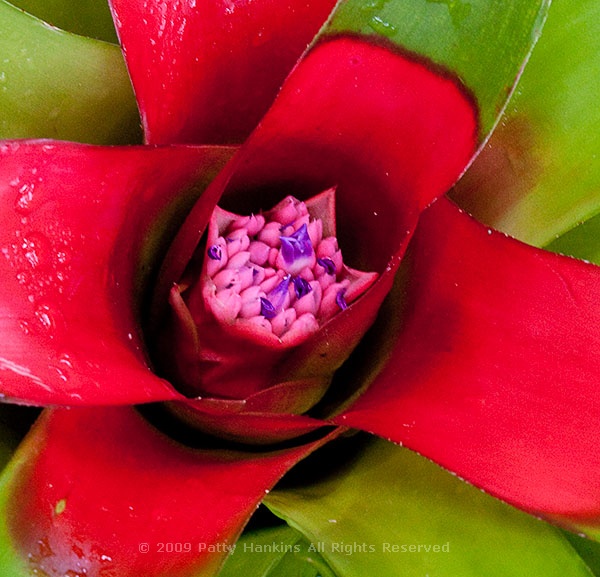
by hankinslawrenceimages | Aug 8, 2013 | Bromeliaceae Family, Flowers
Bromeliads are a family of flowering plants native mainly to the tropical Americas. They often store water in the overlapping leaves at their bases. Perhaps the most commonly seen bromeliad is the pineapple! Different members of the bromeliad family have been used as food, fibers to make cloth, protection and for religious and ceremonial uses.
I’ve photographed several members of the bromelaid family over the years. Here are a few of my photos of them.
A Reverse Morado Bromeliad
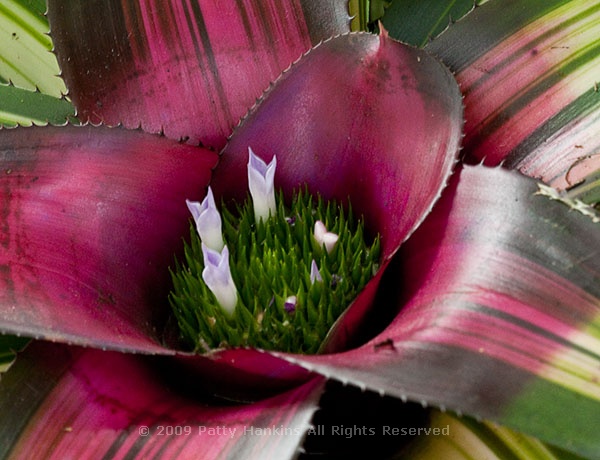
Reverse Morado Bromeliad © 2009 Patty HankinsA
A Neoregelia Compacta Bromeliad – native to Brazil
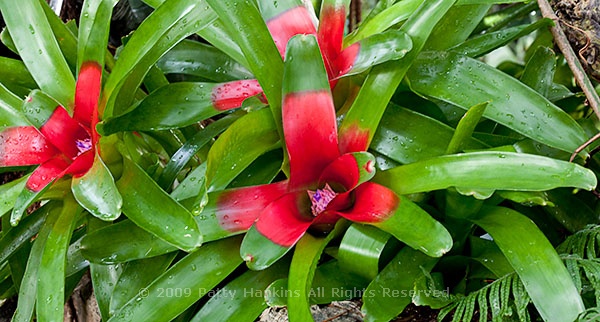
Neoregelia compacta Bromeliad © 2009 Patty Hankins

Neoregelia compacta Bromeliad © 2009 Patty Hankins
A Canistropsis billbergioides forma azurea bromeliad – also native to Brazil
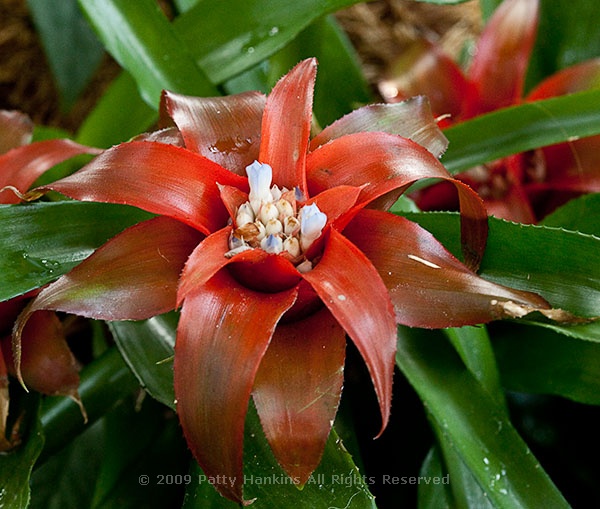
Canistropsis billbergioides forma azurea bromeliad © 2009 Patty Hankins
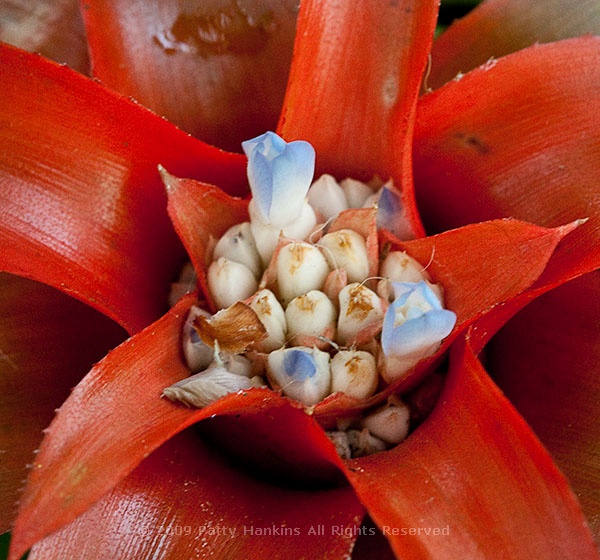
Canistropsis billbergioides forma azurea bromeliad © 2009 Patty Hankins
And finally Patricia – an Achemea Bromeliad – I love the bright orange and yellows in this bromeliad
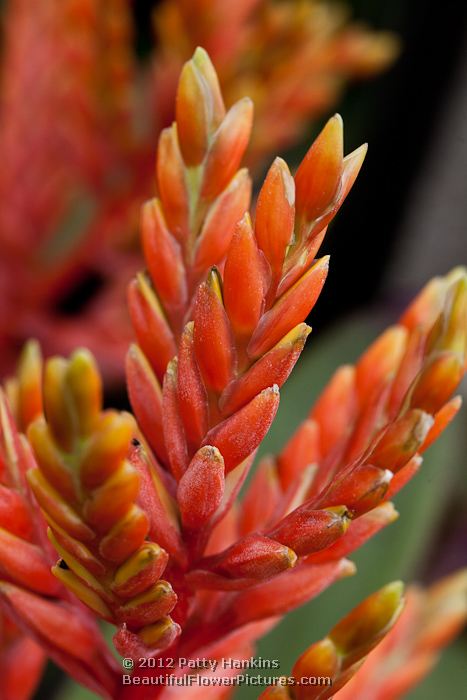
Patricia (achemea bromeliad) © 2012 Patty Hankins
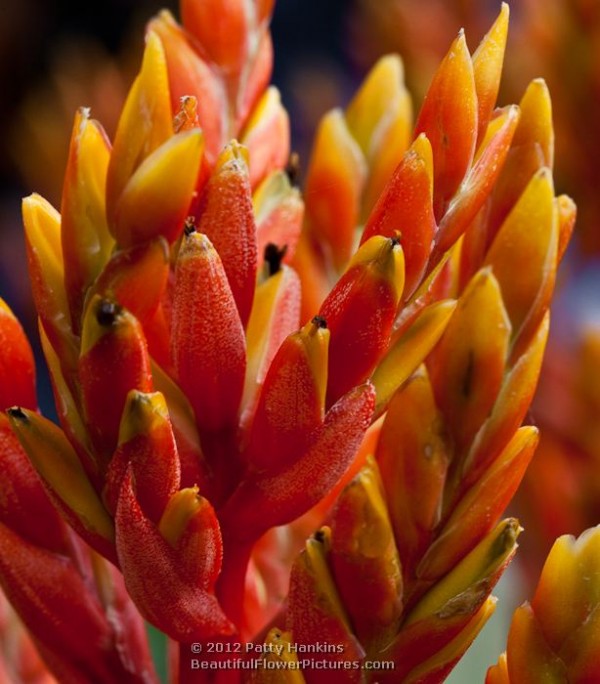
Patricia (achemea bromeliad) © 2012 Patty Hankins
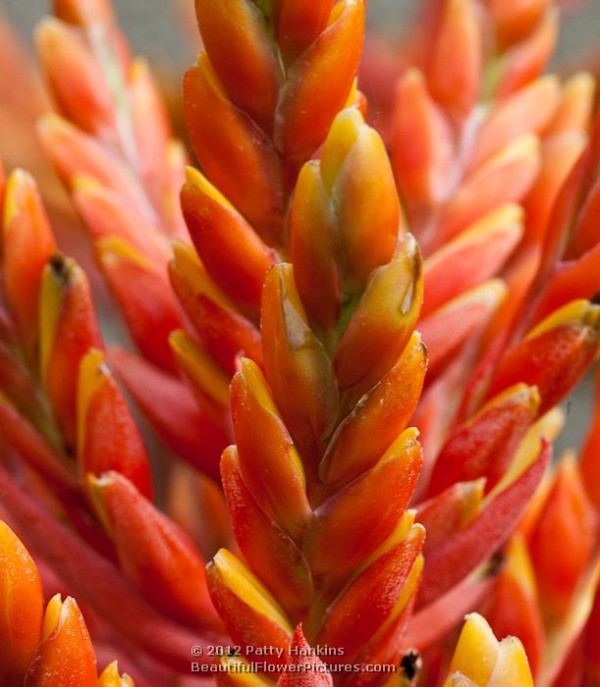
Patricia (achemea bromeliad) © 2012 Patty Hankins
by hankinslawrenceimages | Feb 15, 2011 | Bromeliaceae Family, Flowers
Bromeliads are an members of an incredible family of plants. With over 1300 species, most native to the tropics of the western hemisphere, you can find bromeliads in all colors and shapes. They have been used as a source of food, fibers for clothing and protection. Pineapples may be the best known members of the bromeliad family.
I’ve photographed a number of bromeliads over the years. Here are a few of my favorites.
Tillandsia dyeriana. Native to Ecuador, their habitat in tropical mangrove forests is threatened by over-development. I love the little white flowers on the bright red & yellow plants
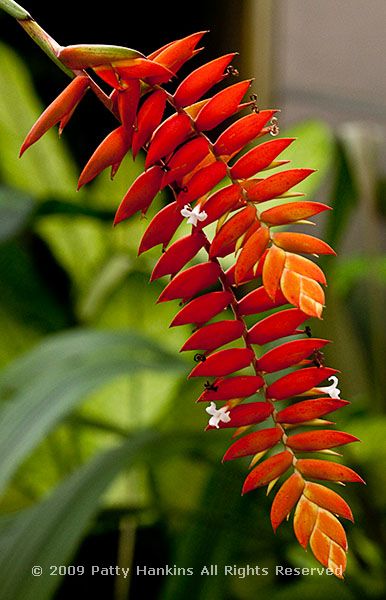 (c) 2009 Patty Hankins
(c) 2009 Patty Hankins
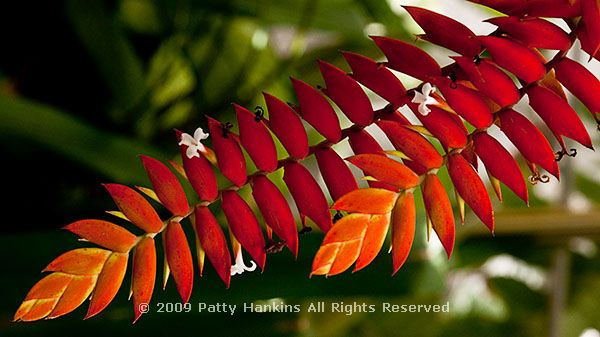
(c) 2009 Patty Hankins
Guzmania Kapoho Flame – a cultivated bromeliad developed by D. Shiigi. I couldn’t resist photographing the bright red & yellows of this one
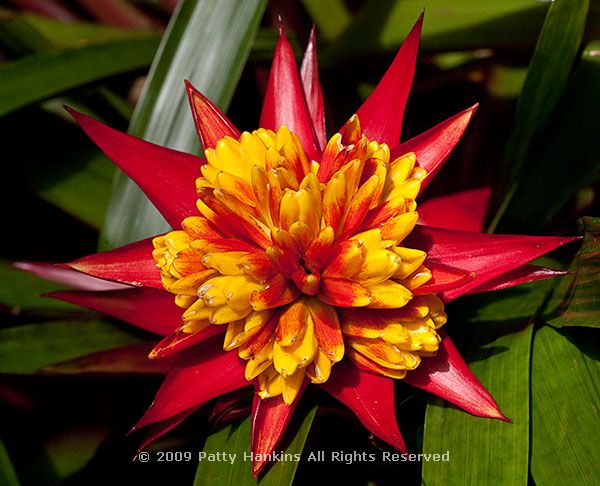
(c) 2009 Patty Hankins
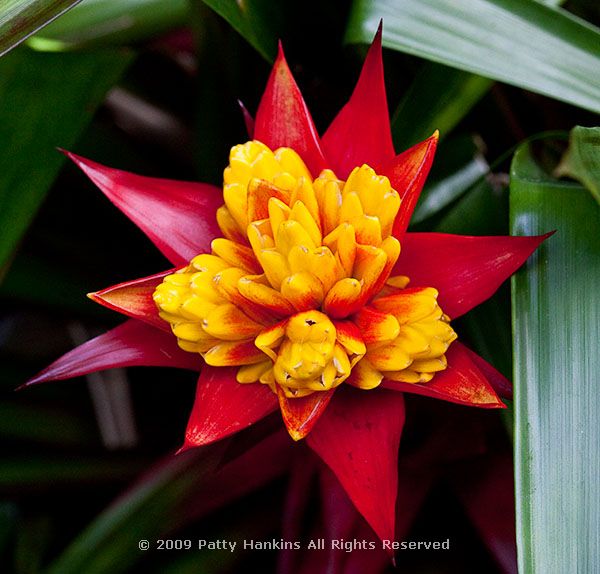 (c) 2009 Patty Hankins
(c) 2009 Patty Hankins
And finally two varieties of Aechmea warasii – both in wonderful shades of red and purple – with little purple flowers.
Aechmea warasii var discolor
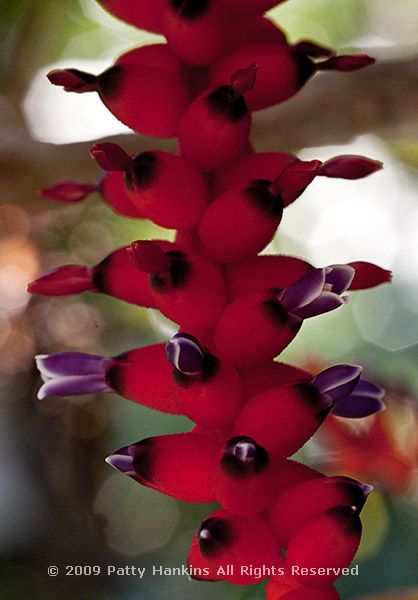 (c) 2009 Patty Hankins
(c) 2009 Patty Hankins
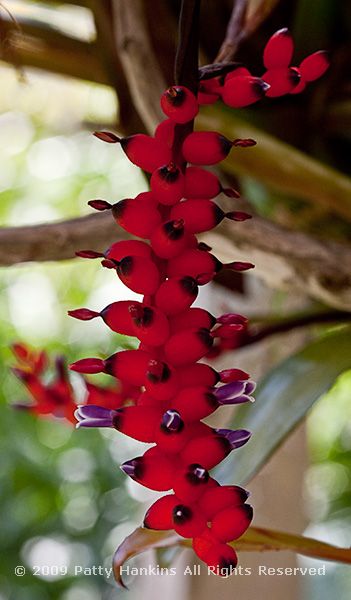 (c) 2009 Patty Hankins
(c) 2009 Patty Hankins
and Aechmea warasii var intermeda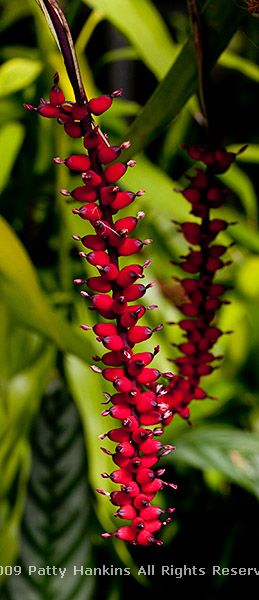 (c) 2009 Patty Hankins
(c) 2009 Patty Hankins
by hankinslawrenceimages | Mar 5, 2009 | Bromeliaceae Family, Flowers
On a recent visit to the Fairchild Tropical Botanical Garden in Coral Gables, Florida, one of the many tropical plants I photographed was the Blue Tango cultivator of and Aechmea Bromeliad. All anyone who knows me has to do is look at the colors in the Blue Tango Bromeliad to know why I’d think it was such a great plant – it’s pink and purple.
In addition to the great colors, the branches of the bromeliad create a spikey spiral shape that offered some really interesting photographic opportunities. The Aechmea Blue Tango Bromeliad is hybrid plant developed by Bullis Bromeliads.
Here are some of the photos I took of th Aechmea Blue Tango Bromeliad.
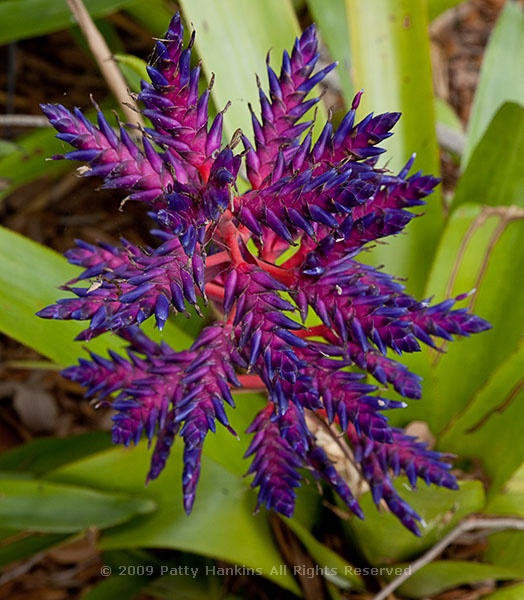
Blue Tango Aechmea Bromeliad I (c) 2009 Patty Hankins
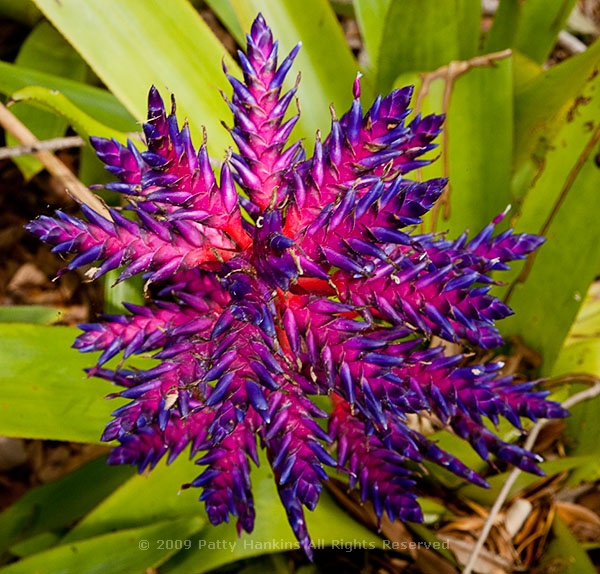
Blue Tango Aechmea Bromeliad II (c) 2009 Patty Hankins
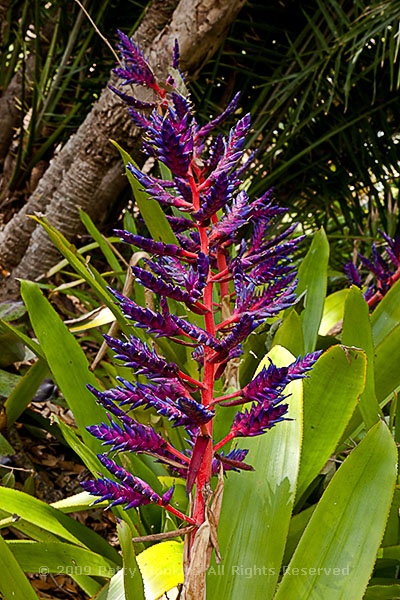
Blue Tango Aechmea Bromeliad III (c) 2009 Patty Hankins
Like most bromeliad, the Blue Tango does have a small flower that blooms on it. The flowers on the Blue Tango Bromeliad are light blue. Unfortunately, the ones I saw at Fairchild Tropical Botanical Garden weren’t blooming the day I was there. I’ll be keeping my eye out for more Blue Tango Bromeliads in hopes of photographing one with the little light blue blossoms.
by hankinslawrenceimages | Jan 3, 2009 | Bromeliaceae Family, Flowers
Recently, I spent a wonderful morning at the United State Botanic Garden in DC. I’d gone to the Botanic Garden to photograph their holiday displays – and ended up spending much more time exploring the jungle section of the Garden than I did photographing the holiday disply.
As I walked around photographing, I noticed many plants belonging to the Bromeliad family. What kept catching my eye was all the different shapes and colors of the plants and their flowers. Here are a few of my favorite photos of the Bromeliads from my trip to the US Botanic Garden.
The first bromeliad I photographed was Tillandsia Ionantha, also known as a Sky Plant, is found in Mexico and Central America. I really like the purple and yellow shoots among the red and green of the plant.
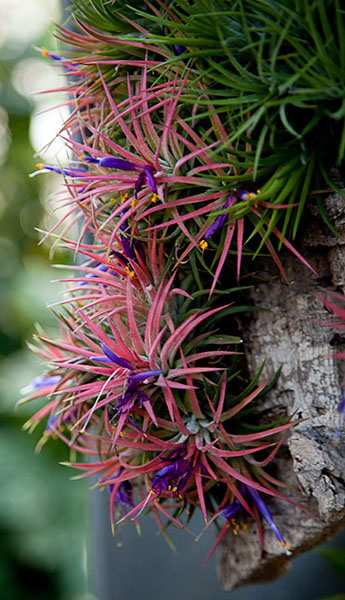
(c) 2008 Patty Hankins
Next is Vriesea Tiffany. I loved the way the sun streaming through the glass of the Botanic Garden backlit the yellow and orange flower.
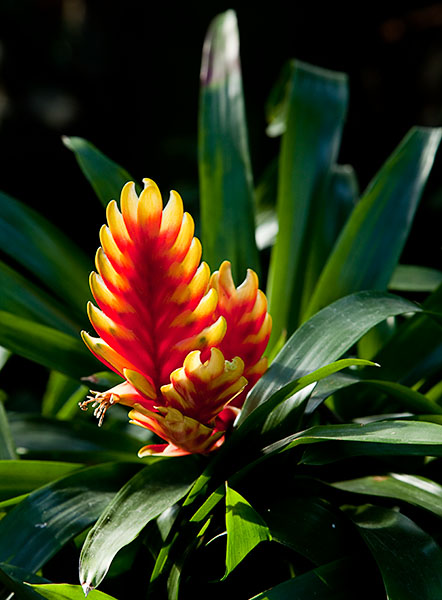
Tiffany Bromeliad (c) 2009 Patty Hankins
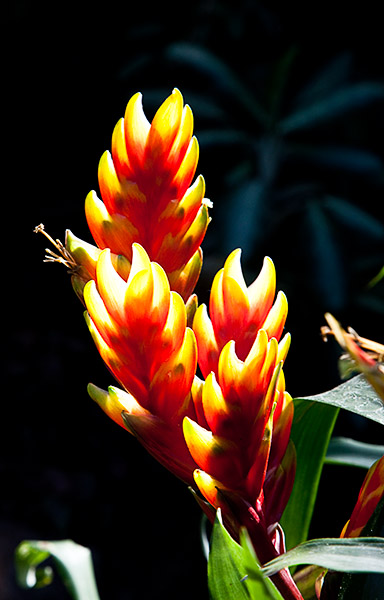
(c) 2008 Patty Hankins
The final bromeliad I photographed is Tillandsia Cyanea or Pink Quill, which is native to Ecuador. There are several Pink Quills at the Botanic Garden. Each one that was in bloom had a pink plume with a purple flower on it.
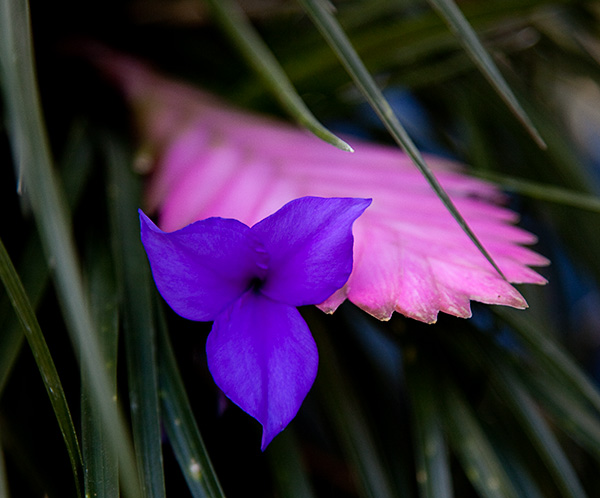
Pink Quill Bromeliad (c) 2009 Patty Hankins
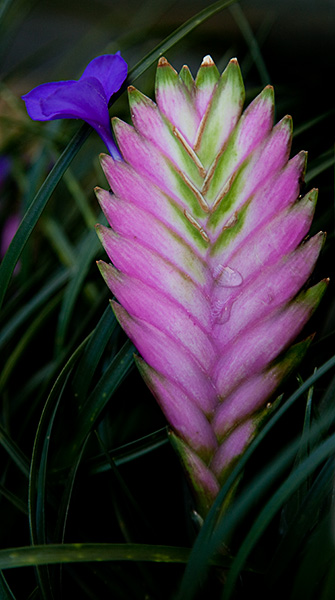
(c) 2008 Patty Hankins
I had a wonderful time photographing the bromeliads at the U.S. Botanic Gardens. I’m really looking forward to heading back there and photographing more of them.























